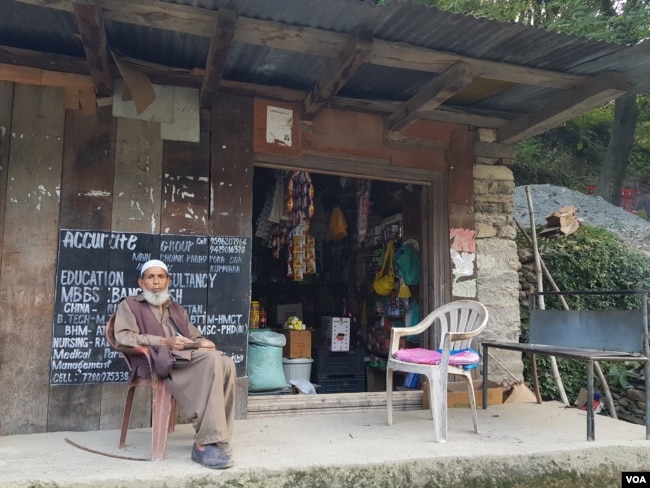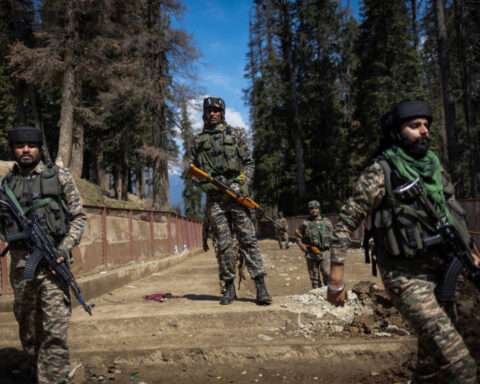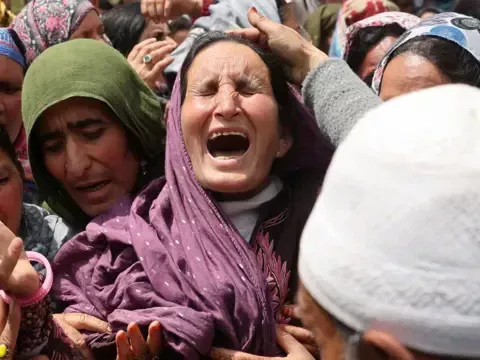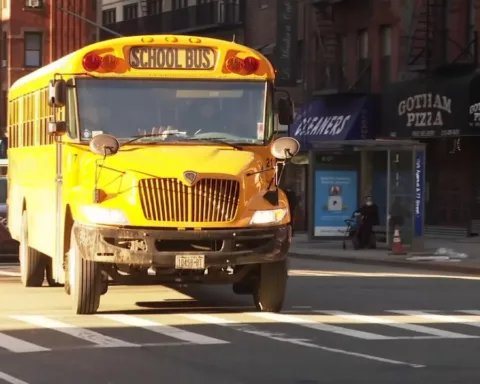Seventy-five years after the blood-soaked partition of British India, the scars can still be found in this unique Himalayan community which straddles the boundary between what are now the Indian-Pakistan -administered portions of Kashmir.
Despite having two names, this has long been one community, and many families have members on either side of the river. Until 2018, the Indian and Pakistani armies allowed family reunions at a “Meetup Point” on the narrow footbridge connecting the villages. Since then, barbed wire coils have blocked anyone wishing to cross the span.
Older residents of the divided community recount stories of the heartbreak that accompanied the 1947 partition, an event that forced millions of Muslims and Hindus to relocate to one new country or the other amid violence and chaos that left hundreds of thousands dead.

“My grandmother used to sit in the lawn and cry hard since she missed her siblings who were on the other side of the frontier,” said Syed Ishfaq, who operates a private school in Teetwal. He said his grandmother had two sisters and a brother who chose to live on the Pakistani side.
“She considered herself ill-fated as she had no contact with her siblings [and] thus died with this unfulfilled wish in her heart,” Ishfaq said.
Sain Khan, now 80 years old, said he and his family fled to Pakistan, joining the rush of humanity seeking to avoid violent reprisals after a maharajah ceded what was then his princely kingdom of Jammu and Kashmir to India on Oct 26, 1947.
Khan returned to the Indian side in 1955 “as all our property and land are in this part of Kashmir,” he told VOA. Since then, he has seen his sisters on the Pakistani side in Muzaffarabad only three times, including once when he crossed the bridge to Chilhana on foot in 2008.

In recent years, family reunions have become even more difficult.
“I have stayed for 15 days in Delhi to get the necessary permissions and documents to travel to other side of Kashmir in Muzaffarabad, which otherwise is a matter of 45 minutes’ drive from my home and involves huge sums which many can’t afford,” Khan said.
Restrictions on travel and communications were eased after a massive earthquake in October 2005, which killed more than 73,000 people and left millions homeless. But whatever ray of hope that created for the divided families was slowly extinguished and since 2018 it has not even been possible to visit one another at the Meeting Point on the bridge.
The separation also haunts members of generations born long after the 1947 partition.
Sajad Geelani, a 36-year-old shopkeeper in Teetwal, has not visited his uncles on the Pakistani side since he was able to cross the bridge in 2011. “I want to visit Neelum Valley again but can’t go due to the present situation,” he said.
Ishfaq, the private school operator, said the costs of the separation are economic as well as emotional.
“Had the situation been peaceful, it could have been much easier for us to go to Muazaffarabad to earn a living, buy essentials and visit hospitals,” he said.
“Muazaffarabad is only 36 kilometers distant from my home but I have to travel all through 200 km to Srinagar to earn my living.” That journey, he explained, requires a difficult trip through the Sadhna Pass which is often cut off by snow during the winter.

While the footbridge remains closed, relative peace along the Line of Control following a 2021 cease-fire accord has led to a rush of tourism, sparked on the Indian side by curiosity-seekers eager to visit the de facto border. Many were drawn to a tourism festival on the banks of the Kishen Ganga River in Teetwal last month.
Tofeeq Ahmad Banday, the owner of a cafe in Tanghdar, about 25 kilometers from Teetwal, said he is seeing several times more visitors than in past years.
The divided families live in hope of better times in the future. Khan said he has come to accept that his sisters will not return from Muzaffarabad but he dreams that a grandson now studying medicine in Kazakhstan will one day “serve his community in the border village of Teetwal.”
And many take heart from the official handling of a recent incident in which a youth sneaked across the river from the Pakistani side to Teetwal. When he was caught he was handed back by the Indian army to their Pakistani counterparts as a goodwill gesture.






